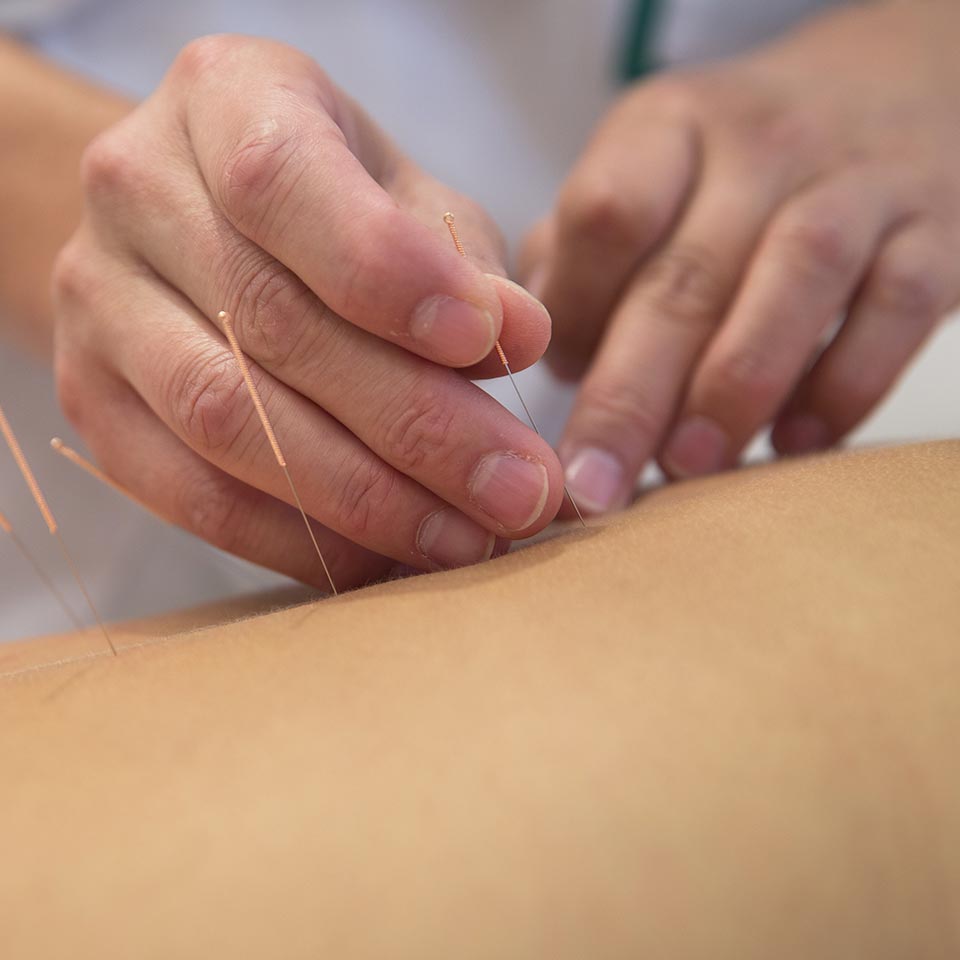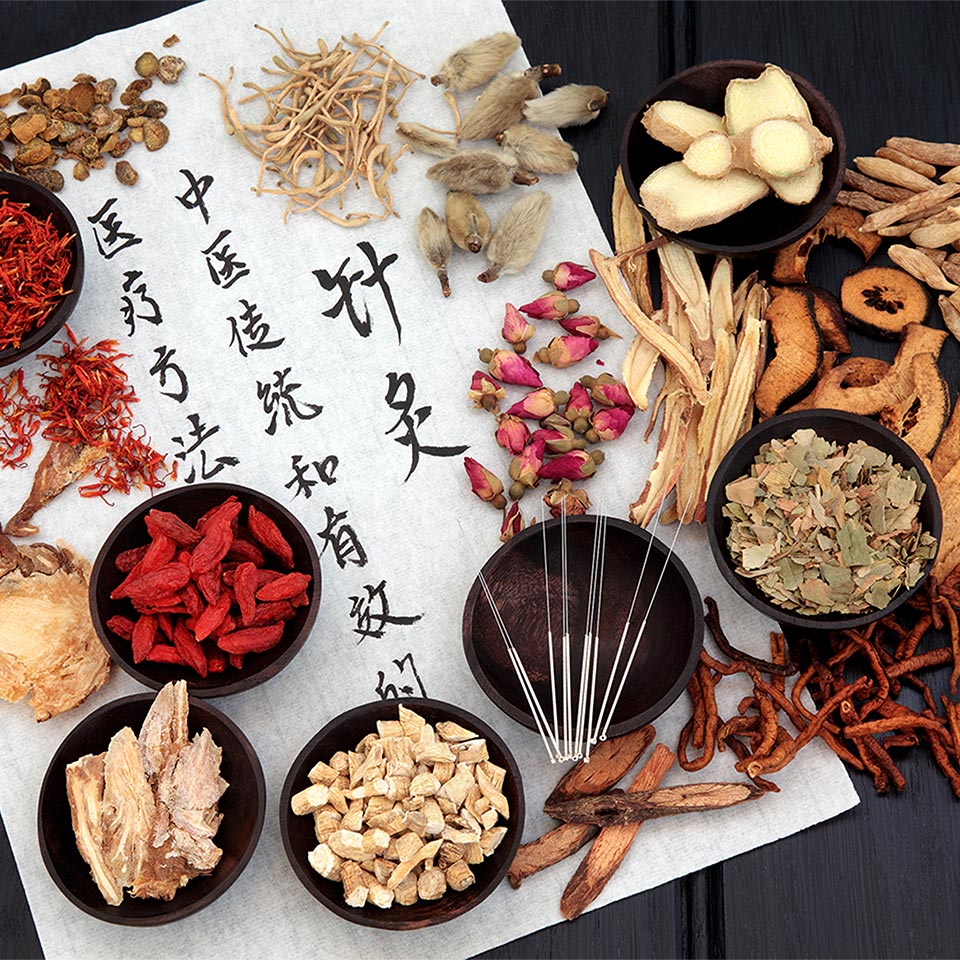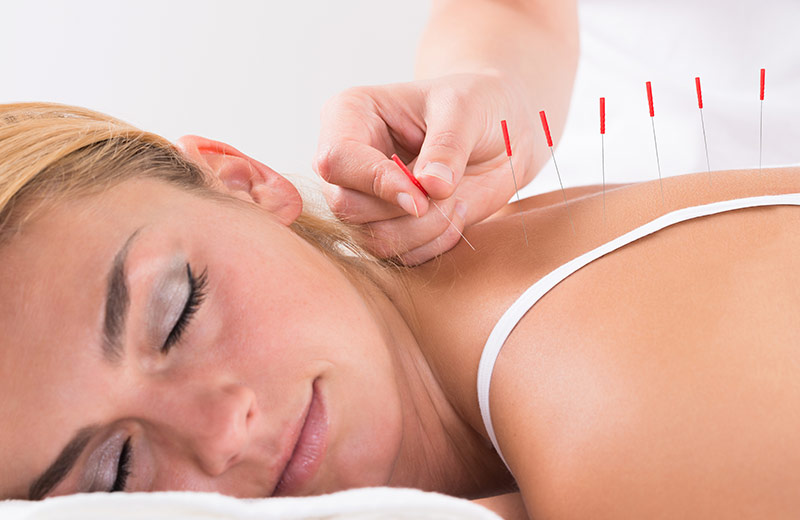Acupuncture is an ancient Chinese treatment for various medical conditions, and is a popular alternative to conventional medical options. This alternative medicine is very popular due to its analgesic effects on chronic back pain, its ability to reduce nausea from chemotherapy treatment, and being able to treat rheumatoid arthritis. In this article, we’ll unpack some of the essential information about acupuncture, and introduce you to this fascinating subject.
What is Acupuncture?
Acupuncture is a form of alternative medicine that involves inserting extremely thin, flexible stainless steel needles into the skin at specific points along certain lines of energy (known as “meridians”). The patient usually sits or lies down while this is done, and multiple needles are used within a single acupuncture session.
Acupuncture originated in China and has existed for thousands of years. The earliest known reference to the practice was found in The Yellow Emperor's Classic, which dates back to 156 BC. Since then, it has evolved and spread to more regions, changing in accordance with the differing philosophies of its practitioners. Some countries, such as Korea, Thailand, and Japan, practise different variations, but the Traditional Chinese Medicine (TCM) and Western Adaptations of acupuncture are the two major types to be practised in most countries.
Different acupuncture techniques determine the duration and placement of the needles. Mostly, acupuncture tends to be used as a supplementary treatment option for reducing pain and lessening the severity of other related health problems. Many people also look into it as a complementary treatment for easing musculoskeletal problems.

Does Acupuncture Work?
While the scientific evidence for acupuncture is still evolving, there’s a growing body of research to suggest that acupuncture can be a safe and effective form of therapy for a range of conditions. In 2013, after 20 years of extensive research, the World Health Organization published a report that asserted the effectiveness of acupuncture when used to treat 28 types of medical conditions. A 2018 analysis also concluded that the effects of acupuncture were different to those provided by placebos. As we’ve said, it’s been found to be effective as a complementary treatment for a variety of health conditions, and many people have reported significant improvements in their symptoms after undergoing acupuncture treatments (a course is usually more effective than a single treatment, with 6-8 sessions being the norm).
Studies suggest that acupuncture can help to alleviate chronic pain, reduce stress and anxiety, improve sleep quality, and also enhance the immune system. Acupuncture has also been used to treat conditions such as migraines, allergies, infertility, and digestive disorders.
What to Wear to an Acupuncture Session
What you should wear to an acupuncture session depends on your acupuncturist. Some people like to disrobe for acupuncture, but large towels or sheets will be provided for draping, so only the necessary skin is exposed. However, it’s not uncommon for patients to wear loose fitting clothes that are easy to remove or roll up (like shorts, sweatpants, sweatshirts, hoodies, or T-shirts). You don’t want anything that’s too constricting, as many of the commonly-used acupuncture points are situated below the knee or elbow, and on the neck or shoulders. Easily removable shoes are ideal to wear to a treatment session and, If you have long hair, it’s usually recommended that you tie it up. Most acupuncturists will simply want you to feel safe and comfortable when they treat you!
Acupuncture Points
Acupuncture points are specific locations on the body where thin needles are inserted during a treatment program. There are literally hundreds of acupuncture points (around 361 in total), typically located along 14 major energy channels called “meridians”. Each meridian has its own set of acupuncture points, and is associated with a particular organ system in the body.
Some of the most commonly-used acupuncture points include:
- LI4 - located on the back of the hand between the thumb and index finger, and used to relieve pain and stress.
- PC6 - located on the wrist, and used to help alleviate nausea and vomiting.
- GB20 - located at the base of the skull, and used to treat headaches and neck pain.
Acupuncture points can also be found on the ears, scalp, and elsewhere on the body, with the preferable points being dictated by an individual's specific condition and symptoms, as well as the practitioner's training and expertise.
How Does Acupuncture Work to Relieve Pain?
The mechanism by which acupuncture works is not fully understood, but it’s believed to stimulate nerve and muscle tissue, and release natural painkillers and anti-inflammatory compounds into the body. A 2017 study suggested that acupuncture targeted “receptive fields” where more than one sensory neuron can be stimulated.
As mentioned earlier, there are different techniques, although they all share a common process of inserting needles along specific lines of energy (or “Qi”: pronounced “chee”). TCM practitioners believe that illness is caused by an imbalance in Qi, hence the effectiveness of acupuncture. The idea behind Qi basically explores your body’s inner workings, and how you’re more prone to illness when you’re stressed, anxious or struggling with mental health.
Generally, acupuncture promotes natural self-healing processes by stimulating specific sites on the body. The most common method is the insertion of thin, sterile needles into the skin. To start most treatments, you lie on a table while specific acupoints are stimulated on different areas of your body. Six to eight needles are usually required in a typical session, though up to 10 needles (or more) may be used when multiple symptoms are being treated.

Acupuncture needles are usually within 0.00254 and 0.00325 inches in diameter (i.e. the width of a strand of hair). Most people experience little to no pain during the insertion of needles. These needles are placed in the strategic points on the body that correspond to a specific medical condition. Other factors like pressure, electrical stimulation or heat are also sometimes used to enhance the effects of treatment.
In Traditional Chinese Acupuncture, ultra-thin, sterile needles are used to release the clogged up energy that’s responsible for a particular ailment. An initial acupuncture session usually lasts up to 1 hour, with individual needles kept in the body between 5-30 minutes, depending on the type of medical condition being treated. Most people feel relief immediately after treatment, while some will require additional visits to the acupuncturist.
Acupuncture Benefits
Acupuncture is one of the most sought-after alternative medicines. When used in conjunction with other forms of medicine to provide a holistic approach to health and well-being, some of the benefits of acupuncture include:
- Pain relief.
- Stress reduction.
- Improved digestion.
- Enhanced immune system function.
- Better sleep.
- Relief from anxiety, depression, migraines, and allergies.
What Can Acupuncture Treat?
As we’ve said, acupuncture can be used to treat a variety of conditions, but some of the most common applications for it include:
Chronic Pain
This is probably one of the most popular and celebrated benefits. The impact of acupuncture on pain has been validated by various researchers. For example, a recent study from the Archive of Internal Medicine shows that it reduces different types of body pain by 15 percent. It’s primarily used to treat chronic back pain that can result from poor body posture, diet, and sleep.
Migraines
Acupuncture treatments have shown great success for relieving and reducing the frequency of headaches and migraines. Although the exact mechanism by which acupuncture appears to prevent these conditions isn’t fully understood, treatment on the face, hand and scalp have often produced worthwhile results. There's also a lower chance of experiencing side effects from acupuncture than there is when making use of strong migraine drugs.
Nausea & Vomiting
There’s strong evidence to back up the fact that acupuncture is effective against nausea and vomiting. There is an acupoint on the underside of the hand that's responsible for this effect. Recent studies published in Cochrane Library point to its effectiveness, and even suggest that acupuncture may be preferable to antiemetic drugs since it does not change the body's chemistry. It’s also been observed to help to delay nausea on the day of chemotherapy treatments.
Anxiety
Acupuncture treatments have profound effects on different types of anxiety: from anxiety neurosis and generalised anxiety, to perioperative anxiety. Once again, the exact mechanism that results in its effectiveness isn’t fully understood, but clinical trials show a corresponding reduction in anxiety following treatment. Furthermore, the necessary dosage of anti-anxiety drugs is often reduced when it’s combined with acupuncture.
Insomnia
Insomnia is a common disorder in today's society. It's primarily caused by work-related stress and societal pressures. Acupuncture is a good way to let go of all that accumulated stress, thereby reducing the frequency of insomnia. Studies published in NCBI revealed that it stimulates the production of nocturnal melatonin: the hormone that’s responsible for sleep. This study showed that regular treatments over the course of 5 weeks reduced the incidence of insomnia in the test group.

Acupuncture Side Effects, Safety Concerns & Contraindications
Acupuncture is considered to be an invasive procedure since the needles penetrate the skin. Therefore, there are risks of complications if it's not performed by a professional acupuncturist. Safety concerns include the following:
Risk of Injury
Acupuncture poses a slight chance of injury to important nerves and other structures. Since it's an invasive procedure, there's a minor risk of bleeding and injury, but this is rare when it’s carried out by professional acupuncturists. Japanese styles of acupuncture attempt to combat the risks of an invasive procedure by instead bringing the needles into contact with the skin without breaking it. Always tell your practitioner if you have a bleeding disorder or use blood thinners before you undergo acupuncture, as these can increase the risk of potential injury.
Risk of Infection
The chance of infection is present during acupuncture if contaminated or reused needles are utilised, which is another reason to only be treated by a professional practitioner. Single use, sterilised needles are now standard tools of the trade, so the risk of infection really is minute.
Risk to Pregnancy
Studies from News-Medical reveal that certain acupuncture points can cause harm to an unborn foetus, and may lead to the termination of the pregnancy.
Risk to Pacemakers
Acupuncture that utilises small electric impulses can potentially interfere with pacemakers, so be sure to declare that you have one before you decide to undergo an acupuncture session.
Acupuncture tends to have a very calming effect on those who undergo treatment, so you should also be careful if you drive home after your appointment. Ideally, it’s best to get a lift with someone else or use public transport. If that’s not possible, then sit quietly for at least 10 minutes before you drive.
Does Acupuncture Hurt?
Acupuncture is generally considered to be relatively painless, but it can sometimes cause mild discomfort or a sensation of heaviness/pressure at the point where the needle is inserted. However, due to the thinness of acupuncture needles, most people report feeling little to no pain during treatment. Some people may experience a sensation of tingling, warmth, or numbness during treatment, but this is typically a sign that the acupuncture point is being activated and that energy flow is being stimulated. Any discomfort or pain is usually short-lived and subsides quickly. If you’re considering acupuncture and are concerned about pain or discomfort, then it's important to discuss your concerns with a professional acupuncturist. They can answer any questions you may have and help you to feel more comfortable and confident about the procedure.
Summary
Always make sure to speak to your doctor or health practitioner before choosing to undergo acupuncture but, when used as a supplementary treatment, there are many potential reasons to be optimistic when you choose to explore this ancient holistic therapy. If you’re someone who is thinking about embarking on a course of acupuncture, then our companion articles should give you some more details about how it can be used to treat specific conditions:
If you’d like to learn more, our Introduction to Acupuncture Course is currently available for just £29 for a limited time (reduced from £127). It's a great way to start your journey towards becoming an accredited practitioner.





